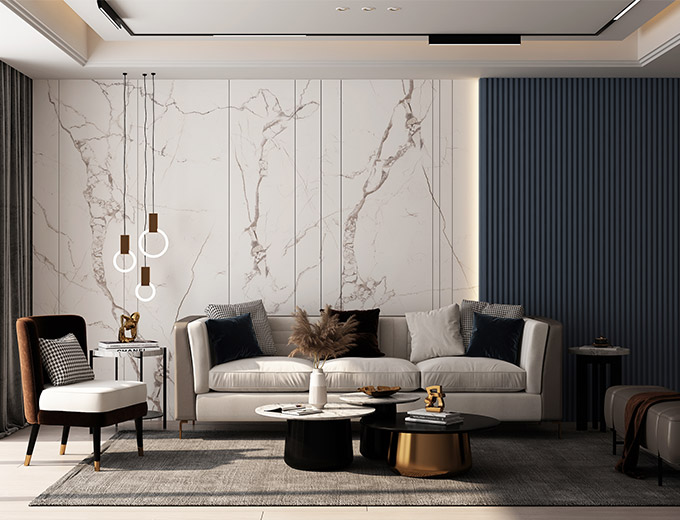Fluted Panels



Certainly, wall panels offer numerous benefits, especially when it comes to providing an instant finished look with no further decorating requirements, and they come in a wide range of colors and finishes. Here's an elaboration on the advantages you mentioned:
-
Instant Finished Look: Wall panels provide an immediate and polished appearance to any room, making it look complete and aesthetically pleasing without the need for additional decorating. This can be particularly beneficial for projects with tight timelines or where you desire a quick transformation.
-
Color and Finish Variety: Wall panels come in an extensive array of colors and finishes, from classic to contemporary, matte to glossy, and even textured or patterned designs. This variety allows you to match your interior design vision precisely, creating a unique and personalized space.
-
Hides Imperfections: Wall panels are excellent at concealing imperfections on your walls. They can effectively cover holes, cracks, and other blemishes, saving you the time and effort required for extensive wall repairs or patching.
-
Versatile Installation: One of the standout advantages of wall panels is their versatility in installation. They can be applied over virtually any surface, including drywall, plaster, brick, or tile, without the need for extensive preparatory work. This versatility makes them a great choice for remodeling projects.
-
Ease of Installation: Wall panels are generally easy to install, and many homeowners can do it themselves. This not only saves on installation costs but also minimizes disruption to your living space, as there is no need for drying time or prolonged construction.
-
Minimal Maintenance: Wall panels are relatively low-maintenance. They are easy to clean and are less prone to staining or damage compared to painted or wallpapered walls. This makes them a practical choice for busy households or high-traffic areas.
-
Customization: If you are offered a full range of color options, you can customize the panels to match your interior design or branding requirements. This flexibility allows you to achieve a cohesive and aesthetically pleasing look throughout your space.
-
Durable and Long-Lasting: High-quality wall panels are built to be durable and long-lasting, ensuring they maintain their appearance and integrity over time. This durability can provide a great return on your investment.
-
Resale Value: Installing wall panels can increase the overall value and attractiveness of your property. Prospective buyers are likely to appreciate the finished appearance and customization options, potentially leading to a higher resale value.
-
Thermal and Acoustic Benefits: Some wall panel materials offer thermal insulation properties, which can help with energy efficiency. Additionally, certain panels provide acoustic insulation, reducing noise transfer within your space.
In summary, wall panels are a versatile and practical choice for achieving an instant finished look with no further decorating requirements. Their wide range of colors and finishes, along with the ability to hide imperfections and ease of installation, makes them an attractive option for both residential and commercial spaces. They offer a cost-effective, customizable, and long-lasting solution for interior design.
Solid wall panels play a crucial role in enhancing energy efficiency and insulation within buildings. As sustainable construction practices and energy conservation become increasingly important, the design and composition of building materials has evolved to address these concerns. Solid wall panels, also known as structural insulated panels (SIPs), have emerged as a viable solution due to their exceptional thermal performance and airtight construction. In this discussion, we will delve into how solid wall panels contribute to improved energy efficiency and insulation in buildings.
Solid wall panels contribute to sustainable construction practices by reducing the demand for energy-intensive building materials and decreasing construction waste. The panels' prefabricated nature means that they can be precisely manufactured off-site, reducing the need for excess materials and minimizing construction-related pollution. Additionally, the durability and longevity of solid wall panels mean that buildings constructed using this method have a longer service life, reducing the need for frequent renovations or replacements.
5. Quick and Efficient Construction:
The use of solid wall panels also leads to faster construction timelines. Since the panels arrive at the construction site prefabricated, they can be assembled quickly, reducing the overall construction period. This not only saves time but also reduces the labor and associated costs.
Our WPC Fluted wall panels are available in a wide range of colours.
WPC fluted wall panels are used in a wide range of applications mainly in residential homes, hotels, B&B, shopping malls, restaurants, etc. They can also be used as a ceiling material for modelling, and are mostly installed vertically in the design of the splice.


